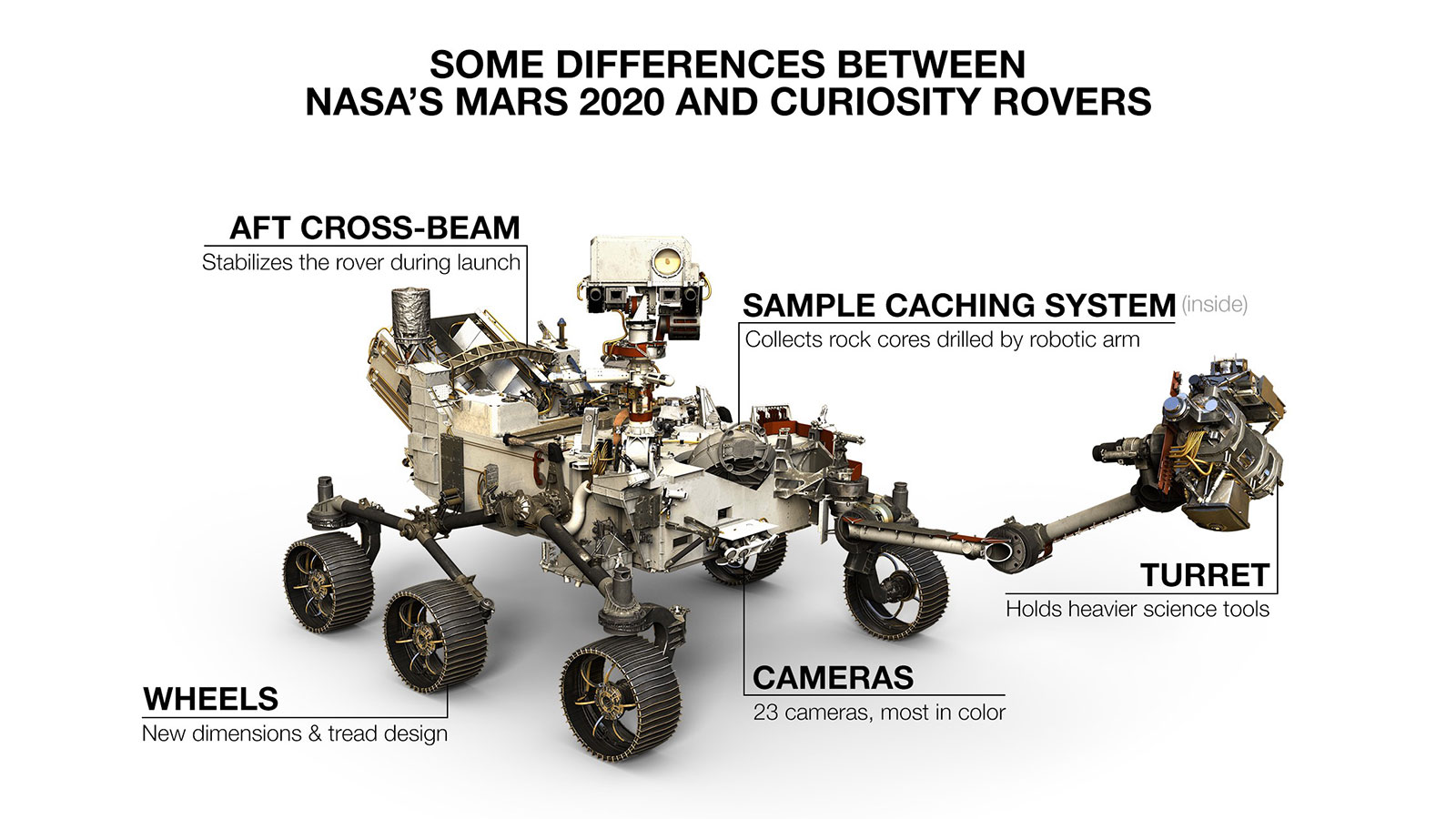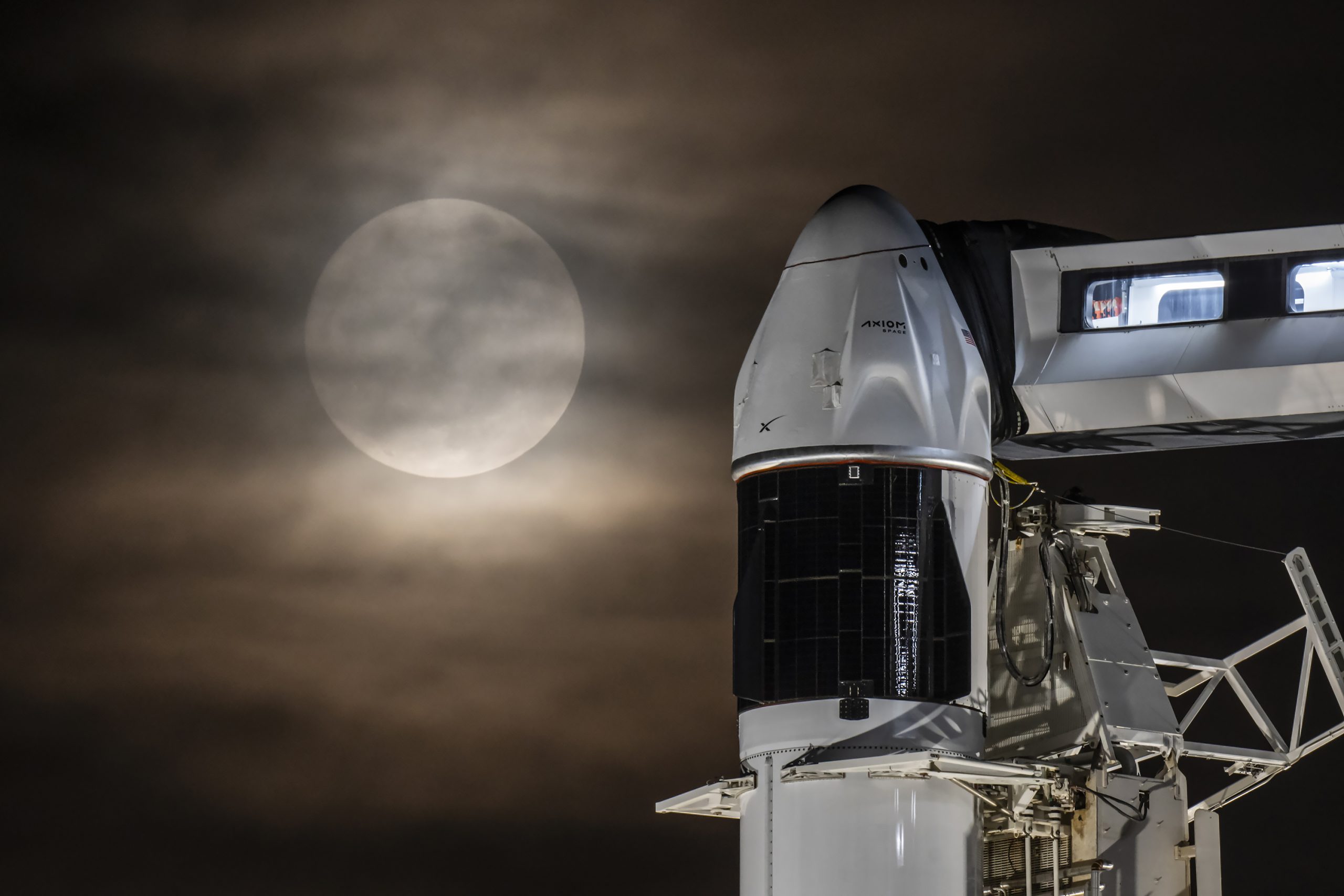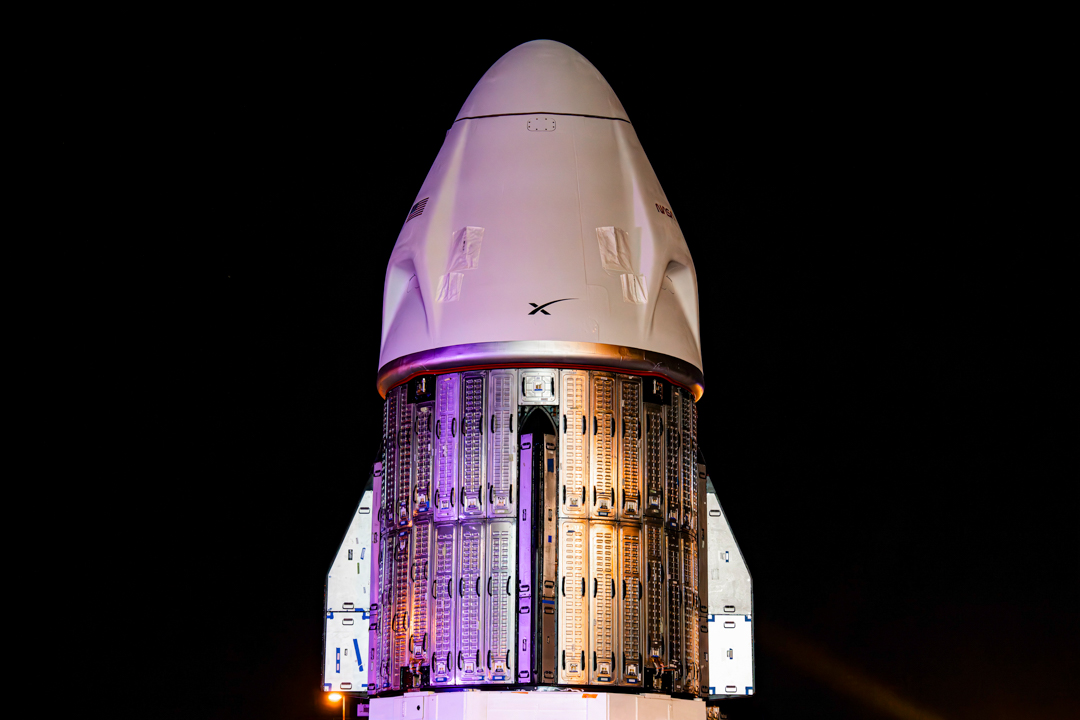

Space
NASA’s next Mars mission will search for fossilized remains of ancient life near once lake
NASA is gearing up to launch its next Mars rover. Dubbed 2020, the roving scientist is set to blast off to the Red Planet next year, aiming to find signs of life and bag samples for eventual return to Earth.
The rover, scheduled to launch next summer, will touch down in February 2021. It’s landing site: a 28-mile-wide crater on the Martian surface, dubbed Jezero Crater, which scientists think hosted a lake in Mars’s past.
Recent data collected from the Mars Reconnaissance Orbiter also shows that Jezero contains mineral deposits known to preserve microfossils here on Earth.
Hydrated silica is one such mineral and thanks to the eagle-eyed orbiter, scientists have identified not one but two patches in the crater.
Orbital imagery has also revealed the remnants of a large delta in Jezero. Deltas are the place where rivers drain into a lake. These are promising areas for life and one of the main factors in choosing this specific location as the landing site.
“The landing site in Jezero Crater offers geologically rich terrain, with landforms reaching as far back as 3.6 billion years old, that could potentially answer important questions in planetary evolution and astrobiology,” Thomas Zurbuchen, associate administrator for NASA’s Science Mission Directorate said in a news release.”Getting samples from this unique area will revolutionize how we think about Mars and its ability to harbor life.”
A map of the mineral content in Jezero crater. The green color represents carbonates, which are good at preserving fossilized life on Earth. Credit: NASA/JPL-Caltech.
But that’s not the only exciting discovery at Jezero. Carbonate minerals were also found. This is exciting because many organisms here on Earth use carbonate minerals to make sturdy structures, like seashells. These structures can last for billions of years once fossilized.
Scientists say that carbonates plus evidence of ancient water is the perfect combination for preservation. Meaning it’s an excellent spot to search for any signs of past lifeforms and to uncover clues about Mars’s climate history.
Carbonates are not biosignatures or signs of life, but they’re an exciting discovery because they form from the interaction between water and carbon dioxide. So they could also tell us how Mars transitioned from a warm and wet climate to the harsh, cold desert world we see today.
“The possibility that the ‘marginal carbonates’ formed in the lake environment was one of the most exciting features that led us to our Jezero landing site. Carbonate chemistry on an ancient lakeshore is a fantastic recipe for preserving records of ancient life and climate,” Ken Williford Mars 2020 Deputy Project Scientist said in a statement. “We’re eager to get to the surface and discover how these carbonates formed.”
Anatomy of a Mars2020 rover. (Credit: NASA/JPL-Cal-tech)
The Mars 2020 rover will scan the crater in search of any potential biosignatures. To that end, the robotic scientist will act as a remote geologist, studying rocks in fine details, caching samples for later return to Earth, and using special instruments to identify minerals in rocks.
Another big aspect of the Mars 2020 mission will be to collect samples for eventual return to Earth, where scientists around the world can study the material.
Mars 2020, will receive an official name before launch as part of a student naming competition hosted by NASA. The six-wheeled rover is destined to touch down in Jezero crater on Feb. 18, 2021, following a July 2020 launch. Around the same time, it’s European counterpart, the Rosalind Franklin ExoMars rover will arrive on Mars at a soon-to-be-announced location.
News
SpaceX Ax-4 Mission prepares for ISS with new launch date
SpaceX, Axiom Space, and NASA set new launch date for the Ax-4 mission after addressing ISS & rocket concerns.

SpaceX is preparing for a new launch date for the Ax-4 mission to the International Space Station (ISS).
SpaceX, Axiom Space, and NASA addressed recent technical challenges and announced a new launch date of no earlier than Thursday, June 19, for the Ax-4 mission. The delay from June 12 allowed teams to assess repairs to small leaks in the ISS’s Zvezda service module.
NASA and Roscosmos have been monitoring leaks in the Zvezda module’s aft (back) segment for years. However, stable pressure could also result from air flowing across the hatch seal from the central station. As NASA and its partners adapt launch schedules to ensure station safety, adjustments are routine.
“Following the most recent repair, pressure in the transfer tunnel has been stable,” a source noted, suggesting the leaks may be sealed.
“By changing pressure in the transfer tunnel and monitoring over time, teams are evaluating the condition of the transfer tunnel and the hatch seal between the space station and the back of Zvezda,” the source added.
SpaceX has also resolved a liquid oxygen leak found during post-static fire inspections of the Falcon 9 rocket, completing a wet dress rehearsal to confirm readiness. The Ax-4 mission is Axiom Space’s fourth private astronaut trip to the ISS. It will launch from NASA’s Kennedy Space Center in Florida on a Falcon 9 rocket with a new Crew Dragon capsule.
“This is the first flight for this Dragon capsule, and it’s carrying an international crew—a perfect debut. We’ve upgraded storage, propulsion components, and the seat lash design for improved reliability and reuse,” said William Gerstenmaier, SpaceX’s vice president of build and flight reliability.
The Ax-4 mission crew is led by Peggy Whitson, Axiom Space’s director of human spaceflight and former NASA astronaut. The Ax-4 crew includes ISRO astronaut Shubhanshu Shukla as pilot, alongside mission specialists Sławosz Uznański-Wiśniewski from Poland and Tibor Kapu from Hungary. The international team underscores Axiom’s commitment to global collaboration.
The Ax-4 mission will advance scientific research during its ISS stay, supporting Axiom’s goal of building a commercial space station. As teams finalize preparations, the mission’s updated launch date and technical resolutions position it to strengthen private space exploration’s role in advancing space-based innovation.
News
Starlink India launch gains traction with telecom license approval
Starlink just secured its telecom license in India! High-speed satellite internet could go live in 2 months.

Starlink India’s launch cleared a key regulatory hurdle after securing a long-awaited license from the country’s telecom ministry. Starlink’s license approval in India paves the way for commercial operations to begin, marking a significant milestone after a three-year wait.
The Department of Telecommunications granted Starlink a Global Mobile Personal Communication by Satellite (GMPCS) license, enabling it to roll out its high-speed internet service. Local reports hinted that Starlink plans to launch its services within the next two months. Starlink India’s services are expected to be priced at ₹3,000 per month for unlimited data. Starlink service would require a ₹33,000 hardware kit, including a dish and router.
“Starlink is finally ready to enter the Indian market,” sources familiar with the rollout plans confirmed, noting a one-month free trial for new users.
Starlink’s low-Earth orbit satellite network promises low-latency, high-speed internet that is ideal for rural India, border areas, and hilly terrains. With over 7,000 satellites in orbit and millions of global users, Starlink aims to bridge India’s digital divide, especially in areas with limited traditional broadband.
Starlink has forged distribution partnerships with Indian telecom giants Reliance Jio and Bharti Airtel to streamline deployment and retail logistics. However, the company still awaits spectrum allocation and final clearances from India’s space regulator, IN-SPACe, and national security agencies before its full launch, expected before August 2025.
India’s satellite internet market is becoming increasingly competitive, with Starlink joining rivals like OneWeb and Jio Satellite Communications. While Starlink positions itself as a premium offering, its entry has sparked debate among domestic telecom operators over spectrum pricing.
Local reports noted that other players in the industry have raised concerns over the lower regulatory fees proposed for satellite firms compared to terrestrial operators, highlighting tensions in the sector.
Starlink India’s launch represents a transformative step toward expanding internet access in one of the world’s largest markets. Starlink could redefine connectivity for millions in underserved regions by leveraging its advanced satellite technology and strategic partnerships. As the company navigates remaining regulatory steps, its timely rollout could set a new standard for satellite internet in India, intensifying competition and driving innovation in the telecom landscape.
Elon Musk
SpaceX to decommission Dragon spacecraft in response to Pres. Trump war of words with Elon Musk
Elon Musk says SpaceX will decommission Dragon as a result of President Trump’s threat to end his subsidies and government contracts.

SpaceX will decommission its Dragon spacecraft in response to the intense war of words that President Trump and CEO Elon Musk have entered on various social media platforms today.
President Trump and Musk, who was once considered a right-hand man to Trump, have entered a vicious war of words on Thursday. The issues stem from Musk’s disagreement with the “Big Beautiful Bill,” which will increase the U.S. federal deficit, the Tesla and SpaceX frontman says.
How Tesla could benefit from the ‘Big Beautiful Bill’ that axes EV subsidies
The insults and threats have been brutal, as Trump has said he doesn’t know if he’ll respect Musk again, and Musk has even stated that the President would not have won the election in November if it were not for him.
President Trump then said later in the day that:
“The easiest way to save money in our Budget, Billions and Billions of Dollars, is to terminate Elon’s Government Subsidies and Contracts. I was always surprised that Biden didn’t do it!”
Musk’s response was simple: he will decommission the SpaceX capsule responsible for transporting crew and cargo to the International Space Station (ISS): Dragon.
🚨 Elon says Dragon will be decommissioned immediately due to President Trump’s threats to terminate SpaceX’s government contracts https://t.co/XNB0LflZIy
— TESLARATI (@Teslarati) June 5, 2025
Dragon has completed 51 missions, 46 of which have been to the ISS. It is capable of carrying up to 7 passengers to and from Earth’s orbit. It is the only spacecraft that is capable of returning vast amounts of cargo to Earth. It is also the first private spacecraft to take humans to the ISS.
The most notable mission Dragon completed is one of its most recent, as SpaceX brought NASA astronauts Butch Wilmore and Suni Williams back to Earth after being stranded at the ISS by a Boeing Starliner capsule.
SpaceX’s reluctance to participate in federally funded projects may put the government in a strange position. It will look to bring Boeing back in to take a majority of these projects, but there might be some reluctance based on the Starliner mishap with Wilmore and Williams.
SpaceX bails out Boeing and employees are reportedly ‘humiliated’
-

 News3 days ago
News3 days agoTesla debuts hands-free Grok AI with update 2025.26: What you need to know
-

 Elon Musk1 week ago
Elon Musk1 week agoElon Musk confirms Grok 4 launch on July 9 with livestream event
-

 Elon Musk5 days ago
Elon Musk5 days agoxAI launches Grok 4 with new $300/month SuperGrok Heavy subscription
-

 News2 weeks ago
News2 weeks agoTesla Model 3 ranks as the safest new car in Europe for 2025, per Euro NCAP tests
-

 Elon Musk2 weeks ago
Elon Musk2 weeks agoxAI’s Memphis data center receives air permit despite community criticism
-

 News5 days ago
News5 days agoTesla begins Robotaxi certification push in Arizona: report
-

 Elon Musk2 weeks ago
Elon Musk2 weeks agoTesla reveals it is using AI to make factories more sustainable: here’s how
-

 Elon Musk2 weeks ago
Elon Musk2 weeks agoTesla scrambles after Musk sidekick exit, CEO takes over sales
















